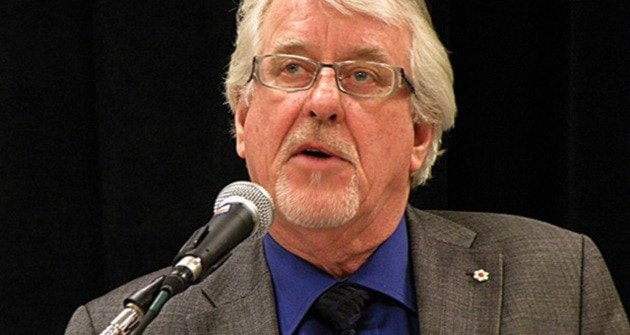Andre Klassen, Kamloops This Week
Urban areas should have a default speed limit of 30 km/h to protect pedestrians and cyclists from fatal collisions, Provincial Health Officer Perry Kendall recommends in a new report.
Safer roads and vehicles have reduced fatalities for vehicle occupants by almost 80 per cent in the past 40 years, but the death rate for pedestrians has remained stubbornly high and cyclist fatalities have gone up as more people take to bikes in urban areas, the report says.
Kendall said when a pedestrian is struck by a car travelling 50 km/h, the chances of survival are only 20 per cent. When the vehicle speed is reduced to 30 km/h, a pedestrian has about a 90 per cent chance of surviving a direct impact.
The current default speed limit for streets in B.C. is 50 km/h — and that includes urban streets where vehicles may be parked on both sides and drivers have little time to see a pedestrian stepping out. Currently, municipalities have to post signs to establish a lower limit for any selected street.
Transportation Minister Todd Stone said the province will study Kendall’s report, but has already put the brakes on at least two of the recommendations — including lower standard speed limits.
“There will be no movement of this is there isn’t a really strong ask and endorsement on this from local governments,” Stone, MLA for Kamloops-South Thompson, told media yesterday, noting a similar motion put to the Union of B.C. Municipalities in 2013 was voted down by the province’s mayors and councillors. That motion called for speeds to be reduced to 40 km/hr.
Liam Baker, assistant transportation engineer with the City of Kamloops, said if the province were to lower speed limits, it would take more than posting new signs to get drivers to comply with the change.
“The traffic-engineering world manages speed limits by considering the three Es: engineering, enforcement and education,” he said.
“We don’t find that arbitrarily lowering speed limits without changing the configurations or the geometry of the road does much to slow down motorists.”
That can include narrowing the roadway at pedestrian crossings so drivers feel they’re more constricted, Baker said, which can help reduce speeds without requiring a major police presence.
The report also recommends the province consider returning to photo radar speed enforcement, which Stone said the province has no interest in doing, calling the program a failure and a poor use of police time.
Kendall suggests the program was a success, with daytime crashes decreasing by 25 per cent during its first year and rising again once the program was cancelled.
“I think it’s very important not to look at any one measure in isolation and point to that one measure as the reason crashes have gone done in a particular time or gone up in a particular time,” Stone said when questioned about Kendall’s findings, suggesting new driving policies and road improvements were as responsible for a decrease in collisions.
The report also recommends extending the mandatory zero blood-alcohol content for new drivers to the age of 25.
The report finds that speed, impairment and distraction are the top contributing factors in police reports of fatal motor vehicle crashes.
